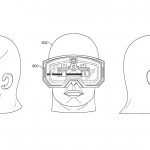 If you thought a company like Apple was too big and too busy to concern itself with virtual reality, think again. A new job listing from the company seeks a software engineering who can create “high performance apps that integrate with Virtual Reality systems.”
If you thought a company like Apple was too big and too busy to concern itself with virtual reality, think again. A new job listing from the company seeks a software engineering who can create “high performance apps that integrate with Virtual Reality systems.”
Posted at the end of last week, as pointed out by 9to5Mac, the position posted on Apple’s job board seeks an ‘App Engineer’:
We are looking for a software engineer to develop UI and applications to create next generation software experiences. The individual must be able to take participate in collaborative and iterative UI design through the implementation phases & complete performant user experience code for product delivery. This engineer will create high performance apps that integrate with Virtual Reality systems for prototyping and user testing.
- Familiarity with 3D Graphics programming; OpenGL, DirectX
- VR/AR development
- Ability to rapidly survey & analyze applications and devices in competitive landscapes
- Ability to understand engineering analysis of complex systems and interpret the result in relation to the user experience
- Interest in Human Factors and User studies a benefit
- Experience in a fast paced, cross functional software environments
This is a full time position based in Santa Clara, California, right near the company’s famous campus in Cupertino.
“Ability to rapidly survey & analyze applications and devices in competitive landscapes,” sounds to me a whole lot like ‘you better be able to find out what our competitors are doing in VR and learn from it.’
While it’s interesting to see that Apple is looking for someone in-house to prototype VR apps, the larger picture is that the ‘casual’ VR space—that of VR smartphone adapters—may be heating up. And this is a bigger deal than those camped in the high-end VR space (Oculus et al.) might realize. It won’t take much more than the integration of made-for-VR sensors and some software tweaks in smartphones to enable the myriad of VR smartphone adapters to deliver a relatively good VR experience. And when that happens, it’ll be the app store wars all over again, with the various players aiming to be the platform for virtual reality apps. With the launch of Cardboard, you could say that Google has already launched the first assault.
And make no mistake, this is not the first time virtual reality has crossed Apple’s mind. Among several patents filed by the company relating to virtual reality, one filed in 2008 (years before the Oculus Rift) shows a head mounted display would be instantly recognizable to anyone following VR today, including an IPD adjustment dial, and a wired or wireless connection to a mobile device.
With Facebook/Oculus, Sony, and mobile rivals Google and Samsung all highly interest in VR, this job posting may be evidence that Apple is starting to feel the pressure. In Apple fashion, the company is unlikely to re-invent the wheel, but they’d be sure to slather the experience with a heaping-helping of polish.










